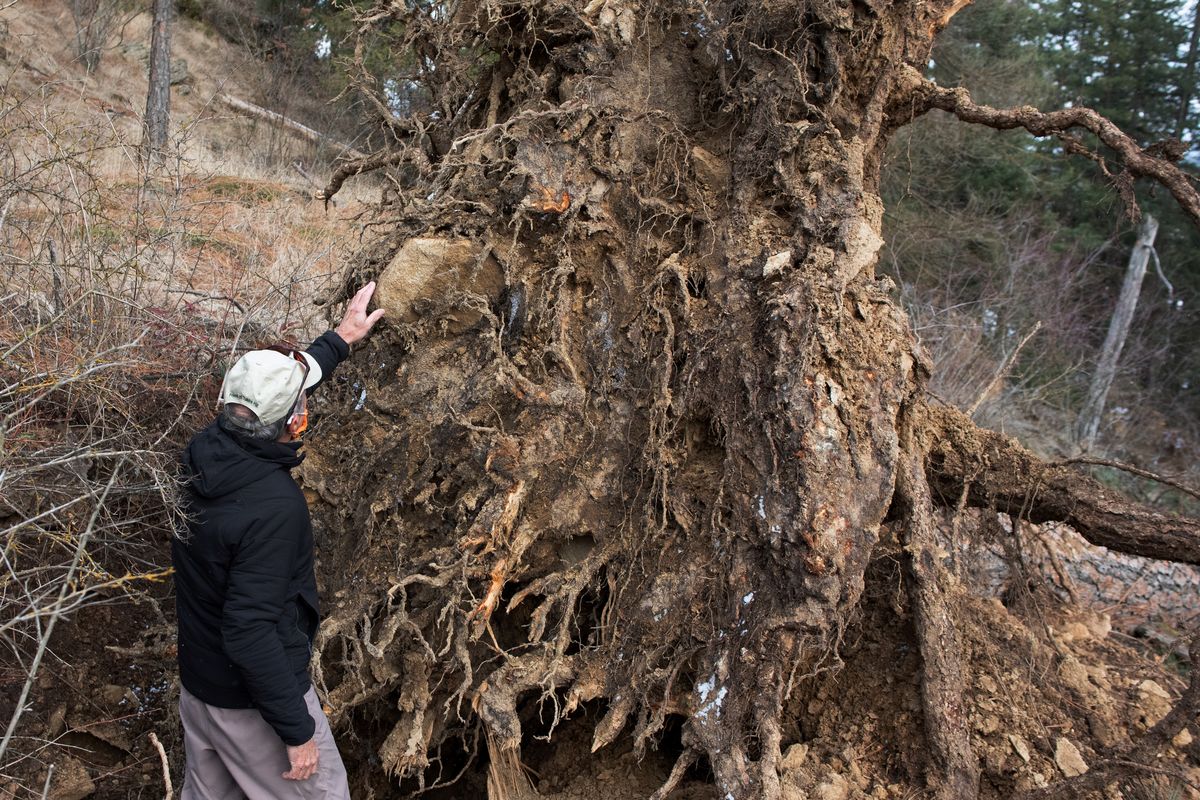Coeur d’Alene’s Tubbs Hill gets a facelift as region braces for increasing recreation

Coeur d’Alene’s Tubbs Hill received a facelift in 2020 with new signs and better built trails improving an already beloved natural area.
While the changes are geared toward improving recreational access, they’re also in preparation for a more crowded and busier future in the Lake City.
“It’s getting more popular and obviously more use,” said George Sayler, a board member of the Friends of Tubbs Hill group. “So, the maintenance becomes more important.”
A decade ago, Coeur d’Alene park officials estimated 500,000 people hiked on the trail each year.
“(Now) it’s quite a bit more than that,” said Monte McCully, the trails coordinator for the City of Coeur d’Alene, although the exact number is unknown.
About two years ago, city park officials, the fire department and volunteers started to map out which trails were being used on Tubbs Hill. Over the decades, numerous unofficial “social trails” had appeared. McCully said city staff “analyzed every trail on the hill.”
In the past, the city, which owns the hill, focused mainly on the main loop trail.
“There were a lot of unauthorized trails,” Sayler said. “Tramping all over the hill. Creating lost habitat, run off into the lake and things like that.”
Those trails that were being used, and weren’t damaging the hill, were turned into official trails. The remaining social trails were closed.
Meanwhile, volunteers helped rebuild trails, creating more gentle switchbacks, building culverts to divert water and installing interpretive signs that tell the natural and cultural history of the place.
There are also regularly scheduled trash pickup days. Most of that work was done last year, with 25 volunteers putting in about 420 hours of work.
All of which will help spread out use and keep recreationists from loving the hill to death, said Dave Yadon, the president of the friends group.
That’s also a goal for city planners. Part of the answer is a revised master park plan.
On Monday, the Parks and Recreation Commission approved an updated master parks plan that calls for 5 acres of park space per thousand residents. The city is currently at 4.7 acres per thousand residents, McCully said.
To maintain balance, Coeur d’Alene will need to add 185 acres of parkland by 2040, assuming the population swells to 85,000. The 200-page document has to be approved by the city’s general services subcommittee before it goes to the city council.
Meanwhile, the Kootenai Metropolitan Planning Organization expects Kootenai County’s population to double by 2040.
Throughout Idaho, the story is similar.
Last year, 7,671,582 people visited Idaho state parks, 1.2 million more than in 2019. While the COVID-19 pandemic and closures of public land in Washington and Oregon certainly drove more people than normal to Idaho, officials don’t expect that trend to reverse.
“I’m thinking that it will probably stay pretty steady,” said Chelsea Chambers, a spokeswoman for the Idaho Department of Parks and Recreation. “We’ve been seeing steady increases in the past six or seven years.”
That growth has stressed the state park department, Chambers said. In response , the parks department requested the Legislature raise the Idaho State Parks Passport fee from $10 to $20 for residents and $20 to $40 for nonresidents.
The Legislature is considering more targeted nonresident fees instead, mirroring a decision in 2020 by the Idaho Department of Fish and Game to raise nonresident license fees.
“It seems like they are leaning toward more out-of-state camping fees rather than the passport (increase),” Chambers said.
On a cloudy January day, Yadon walked Tubbs Hill, examining damage from the recent windstorm and chatting with the occasional hiker.
“Tubbs Hill is an attraction,” Yadon said Monday, pausing near a large downed tree. “How do you keep it a place that can still be relatively natural with this kind of pressure?”